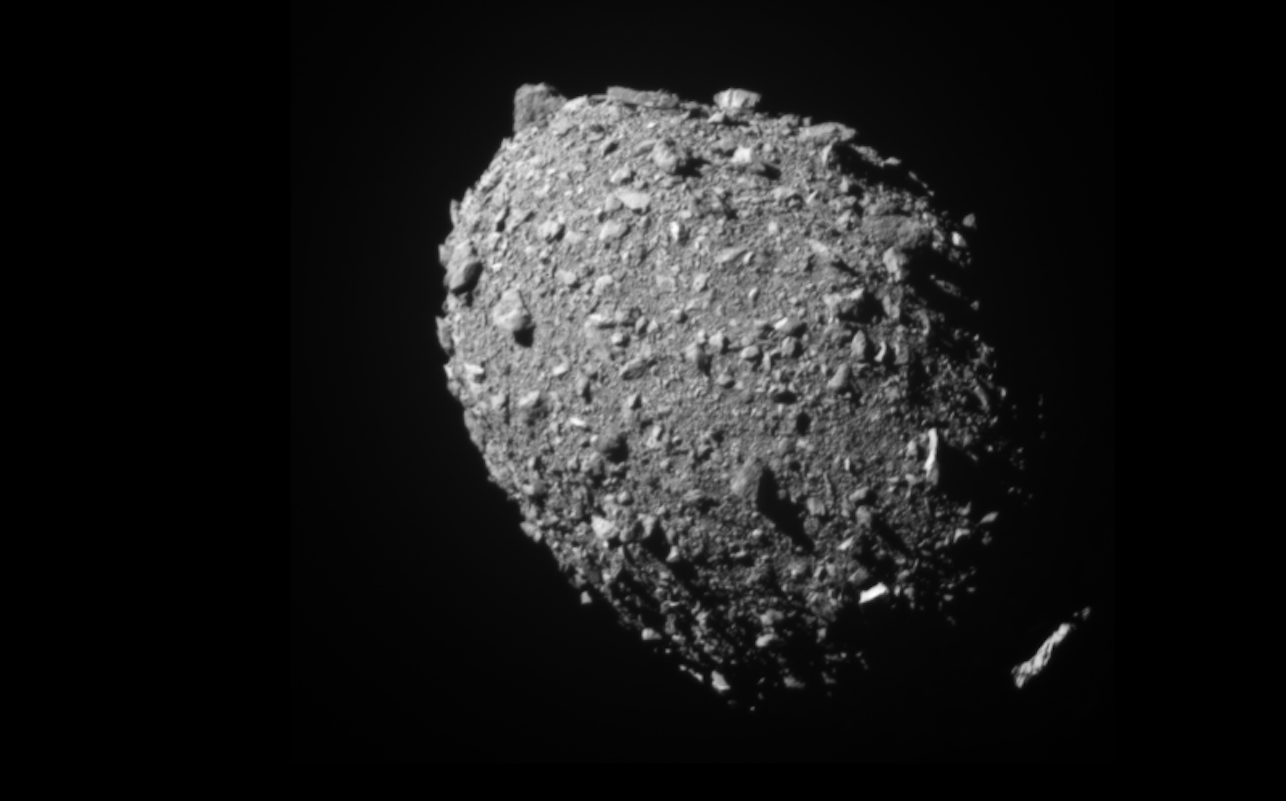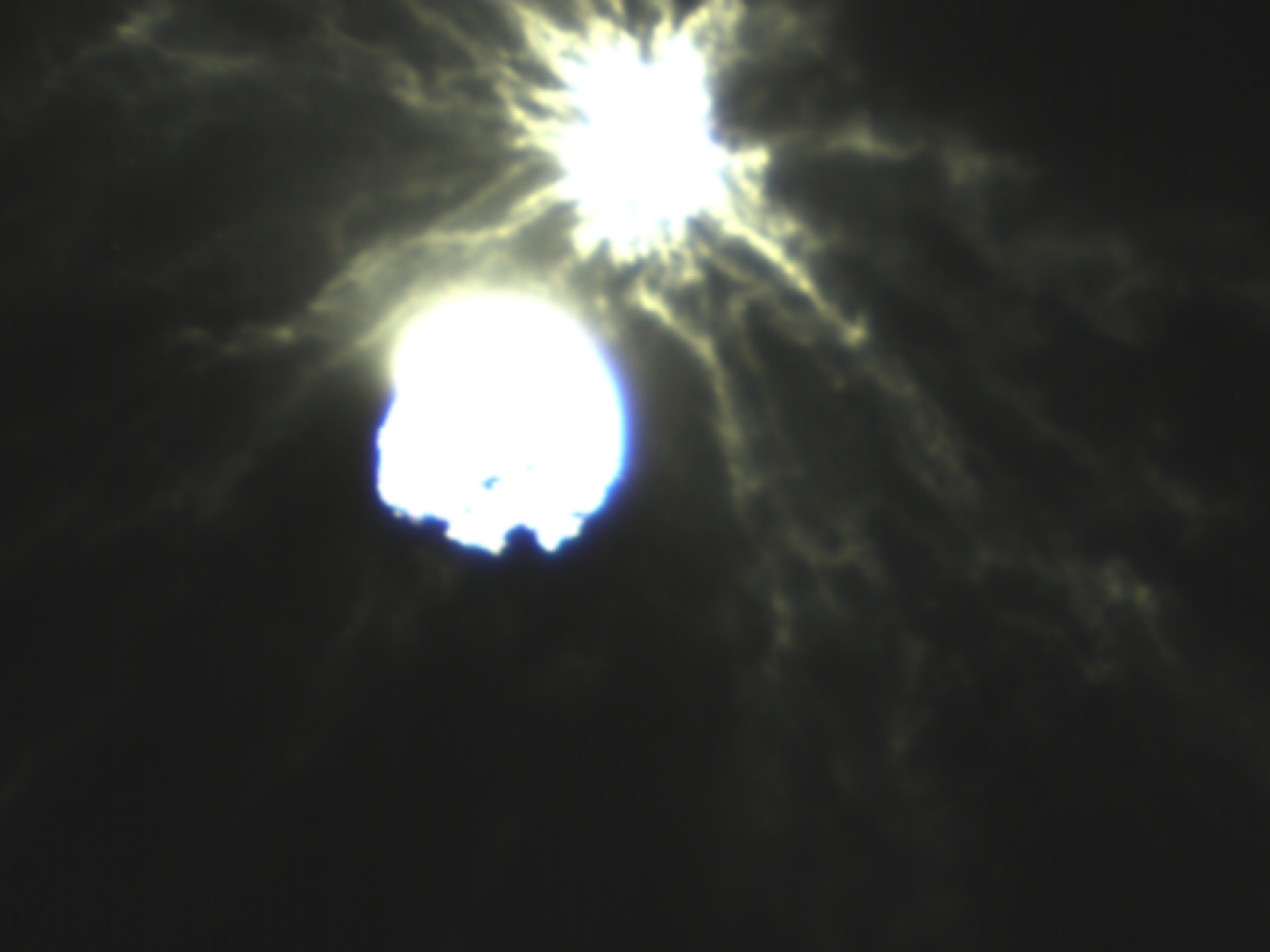
Rest easy, Earthlings.
NASA says its first mission to intentionally crash a spacecraft into an asteroid succeeded in dramatically altering its path, proving the agency is capable of thwarting a potential hazardous space rock in the future, should one be on a collision course with Earth.
The crash into the asteroid, Dimorphos, happened on Sept. 26, 2022, but scientists didn’t know whether they actually moved it until now. Over the past two weeks, astronomers used ground telescopes to study its orbit around a larger asteroid, Didymos, and found the loop was sped up from 11 hours and 55 minutes to 11 hours and 23 minutes, a significant change of 32 minutes.
Mission operations leaders said they only needed to observe a change of 73 seconds to confirm the Double Asteroid Redirection Test, better known as DART, had worked. The experiment vastly exceeded their hopes of a 10-minute reduction in the orbit time, they said.
NASA administrator Bill Nelson called the outcome “a watershed moment for planetary defense, and a watershed moment for humanity” during a news conference on Tuesday, Oct. 11, 2022.
NASA broadcast the $330 million carefully orchestrated collision late last month from the mission operations center at Johns Hopkins Applied Physics Laboratory in Maryland, giving viewers a deer-in-headlights experience. Through a camera on the spacecraft, the team of scientists and engineers, as well as the general public, were able to watch a stadium-sized rock grow from a mere dot of light to a rocky egg-shaped boulder blotting out the entire frame. The feed almost unfolded in real time, delivering an extreme closeup of an event happening 6.8 million miles away.
Based on earlier computer simulations, the DART team knew if Dimorphos turned out to be made of a loosely bound pile of rubble, the odds of the spacecraft giving it a considerable jolt were better. Tom Statler, a NASA program scientist, said he had a gut feeling the night of the strike that it worked.
“When I saw Dimorphos coming into view, and when I saw there was not a single crater on it, and there were a lot of what appeared to be loose rocks … I looked at it and I said, ‘This is not going to be 73 seconds,'” Statler explained. “And it wasn’t.”
The nameless spacecraft, about 1,300 pounds, carried no explosives. Its “weapon” was its own body and the sheer force of plowing into an asteroid at 14,000 mph. Scientists have likened the mission to running a golf cart into the Great Pyramid of Giza. The spacecraft’s nudge left a crater behind but didn’t blow the asteroid to bits like depictions of planetary defense in the movies.

Credit: ASI / NASA
“One of the key pieces to being successful with implementing a technique like this is early detection: The more time we have for that little nudge and the change in that orbital period, the better off we are,” said Lori Glaze, NASA’s planetary science division director. “Give that little nudge, such that the asteroid crosses over Earth’s path, either just before we get there or just after we’ve gone by, so that we don’t actually end up in the same place at the same time.”
Want more science and tech news delivered straight to your inbox? Sign up for Mashable’s Top Stories newsletter today.
The LICIACube, a toaster-sized spacecraft supplied by the Italian Space Agency, has flown by the disaster site and taken pictures of the results. Space telescopes and Earth-based observatories also have captured shots. Astronomers have been impressed with the images.
Some, like those taken by the Southern Astrophysical Research Telescope in Chile, show a bright light cast from the asteroid like a comet. That “tail” is made up of grains thrown from the asteroid, driven away by the pressure of solar radiation, Glaze said.

Credit: Southern Astrophysical Research Telescope
“a watershed moment for planetary defense, and a watershed moment for humanity … ”
NASA chose Dimorphos for target practice because it was an ideal specimen for tracking the results of DART’s hit, not because it in any way posed a danger to Earth. Prior to the recent sucker punch from NASA’s spacecraft, it likely had the same orbit, looping around a larger asteroid, Didymos, for thousands of years.
The effect of a small spacecraft on a solitary asteroid’s trip around the sun is incredibly hard to track because the change in its speed would be on a scale of millimeters per second. Detecting how the impact changed the asteroid’s orbit around a nearby rock, on the other hand, is much easier to measure.
Millions of space rocks orbit the sun. The majority are in the main asteroid belt between Mars and Jupiter, but occasionally rocks get nudged into the inner solar system, relatively closer to Earth.
There are currently no known asteroids on an impact course with our planet. Scientists are, however, keeping a vigilant eye on 30,000 large objects in Earth’s solar system neighborhood and estimate there could be around 15,000 asteroids larger than 460 feet across waiting to be discovered. Using powerful telescopes, these astronomers are currently finding around 500 new sizable space rocks near Earth (which means passing within some 30 million miles of our planet’s orbit) each year.
In order for planetary defense programs to be effective, scientists need a detailed inventory of what’s out there.
But even smaller rocks can cause immense destruction. An impact by an asteroid some 100 to 170 feet wide would destroy a place like Kansas City. An undetected meteor exploded over Chelyabinsk, Russia, in February 2013, causing an airburst and shockwave that affected six cities and injured 1,600 people. The rock was just 60 feet across, according to NASA.
DART is an important first step in an international effort to prepare for these types of existential threats, NASA’s administrator Nelson said: “NASA is trying to be ready for whatever the universe throws at us.”
